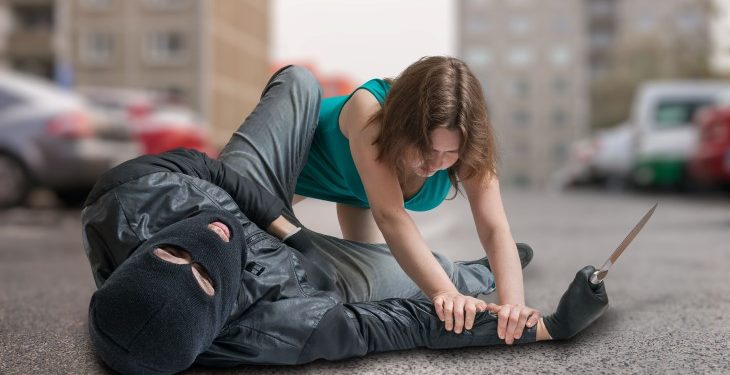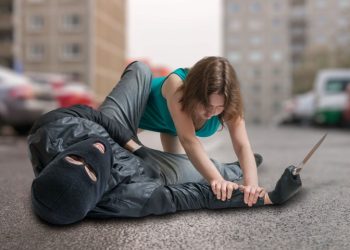In the Lone Star State, self-defense laws are taken seriously. Texas’s Stand Your Ground law grants individuals the right to defend themselves without a duty to retreat under certain circumstances. With gun ownership being deeply embedded in the state’s culture, understanding how this law works is essential for every resident and visitor. Whether you live in Houston, Austin, Dallas, or small towns like Ingleside, this article will explore how the law applies, when it can be used, and its real-world implications across Texas.
What Is the Stand Your Ground Law?
This Article Includes
- 1 What Is the Stand Your Ground Law?
- 2 Historical Background of the Law
- 3 Key Provisions of Texas Stand Your Ground Law
- 4 Difference Between Stand Your Ground and Castle Doctrine
- 5 Real-World Examples in Texas
- 6 How Law Enforcement Responds
- 7 Legal Proceedings and Civil Lawsuits
- 8 Criticism and Support
- 9 Data and Statistics
- 10 Impact on Minority Communities
- 11 The Role of Gun Ownership
- 12 Responsible Gun Ownership and Training
- 13 Youth and Self-Defense Laws
- 14 Recommendations for Residents
- 15 Conclusion
Texas’s Stand Your Ground law is a form of self-defense doctrine that allows individuals to use force, including deadly force, to protect themselves without the requirement to retreat when they are lawfully present in a location. This law is codified under Texas Penal Code § 9.31 (self-defense) and § 9.32 (deadly force in defense).
Unlike in states where there’s a legal obligation to retreat before using deadly force (often referred to as “duty to retreat”), Texas law removes that obligation in many scenarios, particularly if the individual is not engaged in illegal activity and has a legal right to be where they are.
Historical Background of the Law
Texas has long upheld the principle of self-defense. However, the expansion to a full-fledged Stand Your Ground law came in 2007 when the legislature passed bills enhancing the legal protections of those who use force in self-defense. The changes made it easier for Texans to assert their rights in self-defense cases without worrying about legal consequences if they failed to retreat.
Since then, the law has played a significant role in numerous high-profile cases and public debates about gun rights and criminal justice reform.
Key Provisions of Texas Stand Your Ground Law
No Duty to Retreat
If an individual is attacked in a place they have a legal right to be—such as their home, vehicle, or workplace—they are under no obligation to retreat before using force.
Reasonable Belief of Threat
The use of force must be based on a “reasonable belief” that it was immediately necessary to protect oneself against the other’s use or attempted use of unlawful force.
Use of Deadly Force
Deadly force is justifiable when:
-
The individual believes it is necessary to protect themselves against deadly force or serious bodily injury.
-
The attacker is unlawfully and forcibly entering, or has entered, the individual’s home, vehicle, or workplace.
Criminal Activity Disqualification
The law does not apply if the person using force is engaged in criminal activity at the time. For example, someone involved in illegal drug trade or burglary cannot claim Stand Your Ground as a defense.
Difference Between Stand Your Ground and Castle Doctrine
Many people confuse Texas’s Stand Your Ground law with the Castle Doctrine, but they are distinct concepts.
-
Castle Doctrine applies strictly to places like your home, vehicle, or workplace. It presumes a threat if someone unlawfully enters these places.
-
Stand Your Ground expands this right to any place you have a legal right to be.
So while Castle Doctrine is location-based, Stand Your Ground focuses on behavior in broader public and private settings.
Real-World Examples in Texas
Houston
In a 2022 incident in Houston, a homeowner shot an intruder who broke into his garage. The Harris County District Attorney declined to press charges, citing the Stand Your Ground law and the Castle Doctrine. This case reinforced that homeowners are well within their rights when they feel threatened on their property.
Dallas
In Dallas, a controversial case involved a gas station altercation where one man shot another during an argument. The shooter claimed self-defense, but surveillance footage cast doubt on whether there was an imminent threat. The court found that the Stand Your Ground claim was not justified, showing that context and evidence matter.
Ingleside
In small towns like Ingleside in San Patricio County, the law plays a critical role due to the limited law enforcement presence in rural areas. One 2023 case involved a homeowner confronting a suspected thief late at night. Though the suspect fled, the homeowner fired a warning shot. No charges were filed, as the action was deemed a defensive response under tense circumstances.
How Law Enforcement Responds
Texas law enforcement officers are trained to evaluate the scene thoroughly when Stand Your Ground is claimed. Officers consider:
-
Whether the person had a right to be in the location
-
The nature of the threat or attack
-
Whether force was proportionate
-
Eyewitness accounts and physical evidence
In many cases, officers on the scene do not arrest individuals who used deadly force if it clearly appears to be in self-defense. However, cases are often reviewed by the District Attorney’s office to ensure the law was appropriately applied.
Legal Proceedings and Civil Lawsuits
Even if someone is cleared criminally under the Stand Your Ground law, they may still face civil lawsuits. The family of a deceased individual can sue for wrongful death. However, Texas provides certain immunities in civil cases as well, though not absolute.
It’s important to have legal representation if you are involved in a Stand Your Ground case. Defense attorneys in cities like San Antonio, El Paso, and even rural courts in East Texas emphasize the importance of evidence and proper legal procedure.
Criticism and Support
Support
Gun rights groups and self-defense advocates argue that the Stand Your Ground law:
-
Protects innocent citizens
-
Deters criminals
-
Empowers individuals, especially in rural areas with slower emergency response times
Organizations like the Texas State Rifle Association often advocate for strengthening these protections even further.
Criticism
Critics, including civil rights groups, argue the law:
-
Encourages vigilantism
-
Disproportionately affects minority communities
-
Leads to preventable deaths
Some point to cases where verbal arguments escalated into shootings, suggesting that Stand Your Ground may sometimes provide legal cover for avoidable violence.
Data and Statistics
Statewide Numbers
-
Over 100 Stand Your Ground cases are reported annually across Texas.
-
More than 60% of the cases involve firearms.
-
Approximately 30% of defendants who invoke Stand Your Ground are never charged.
-
In urban counties like Harris (Houston), Travis (Austin), and Bexar (San Antonio), there’s a growing number of contested cases going to trial.
Regional Differences
-
Rural areas, such as West Texas or the Panhandle, see fewer cases but tend to rule more in favor of the defendant.
-
Urban areas, due to greater surveillance and witness availability, have more complex outcomes.
Impact on Minority Communities
Studies and watchdog reports have suggested that the application of Stand Your Ground may have racial disparities. In some cases, white defendants are more likely to be acquitted than defendants of color, even under similar circumstances. Groups in cities like Fort Worth and Houston are calling for deeper investigations into how the law is applied and whether bias plays a role in decision-making.
The Role of Gun Ownership
Texas has some of the most permissive gun laws in the U.S., including permitless carry. This has increased the number of citizens who may feel empowered to use their weapons in a perceived self-defense situation. While gun ownership is a constitutional right, the combination of Stand Your Ground and widespread gun access can create volatile situations.
Responsible Gun Ownership and Training
Experts and law enforcement recommend that gun owners take proper training courses, not just for firearm use but also legal education. Many incidents occur because individuals misinterpret what constitutes a “reasonable threat.”
Programs in cities like Lubbock, Tyler, and Corpus Christi are actively working with the public to promote responsible firearm handling and awareness of Texas law.
Youth and Self-Defense Laws
Another dimension to the Stand Your Ground law is its interaction with youth and minors. There have been cases where teenagers claimed Stand Your Ground in school or neighborhood fights. These cases are usually judged more cautiously, given the heightened responsibility expected of adults in such legal defenses.
In cities like Plano, Garland, and McAllen, school districts have started offering seminars for parents and teenagers about what self-defense actually means under Texas law.
Recommendations for Residents
-
Always attempt to de-escalate a situation if safe to do so.
-
Do not pursue or provoke an attacker once the threat has ended.
-
Understand the law’s limitations; Stand Your Ground is not a license for aggression.
-
Report all incidents to law enforcement and cooperate fully.
-
Seek legal counsel if you use force in any self-defense scenario.
Conclusion
Texas’s Stand Your Ground law reflects the state’s deep-rooted belief in individual liberty and self-protection. However, it is a powerful tool that must be used with understanding and responsibility. Whether you live in a large city like Houston or a coastal town like Ingleside, being informed about when and how this law applies can make the difference between freedom and a felony.
In an increasingly complex legal and social environment, education, preparation, and responsible behavior are the cornerstones of using the Stand Your Ground law appropriately.


